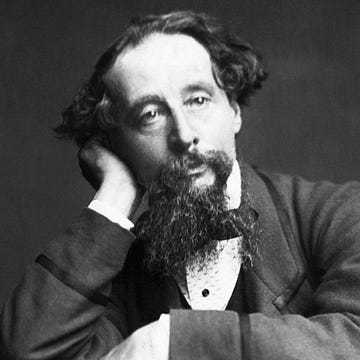1005–1057
Who Was Macbeth?
Considered to be one of the last Gaelic kings, the real Macbeth MacFindlaech wasn’t the murderous, terrible character of William Shakespeare’s The Tragedy of Macbeth. In reality, Macbeth became Earl of Moray, a position his father once held, around 1032. He ascended to the Scottish throne in 1040 after killing his cousin King Duncan I in battle. For the next 17 years, Macbeth largely ruled a peaceful and prosperous nation. However, in the 1052, Duncan’s son Malcolm began to challenge Macbeth for the throne by lobbying English lords and waging war. Malcolm killed Macbeth in battled five years later and eventually became the new high king of Scotland.
Quick Facts
FULL NAME: Macbeth MacFindlaech
BORN: c. 1005
DIED: August 15, 1057
BIRTHPLACE: Alba, Scotland
SPOUSE: Gruoch
CHILD: Lulach
Early Life
Macbeth MacFindlaech was born in Alba in central Scotland around 1005—the same year that his grandfather became king. His father, Findlaech MacRuaridh, was mormaer (an earl) of Moray, a province in northern Scotland. His mother, Doada, was the second daughter of Malcolm II. Historians describe the young Macbeth as tall, fair haired, and handsome, with a ruddy complexion.
At the age of 7, Macbeth was sent to a Christian monastery to be educated by monks—a requirement for all important chieftains’ sons. At age 15, Macbeth’s cousins Malcolm and Gillecomgain killed his father, possibly for being too close to Malcolm II, King of Scotland.
Earl of Moray
After his tutelage, Macbeth reappeared around 1032 when Gillecomgain, his cousin, was killed by order of Malcolm II for his killing of Findlaech. Macbeth was then elected mormaer of Moray, and soon married Gillecomgain’s widow, Gruoch, and adopted her son, Lulach. The marriage strengthened his claim to the throne.
On November 24, 1034, Malcolm II died of natural causes. One month later, his son, Duncan MacCrinan, was elected king. For six uneasy years, Duncan ruled Scotland with a thirst for power countermanded by his incompetence on the battlefield.
King of Scotland
In 1038, Ealdred, Earl of Northumbria, attacked southern Scotland, but the effort was repelled, and Duncan’s chiefs encouraged him to lead a counterattack. Duncan also wanted to invade the Orkneys Islands to the north. Over the objections of all of his advisers, he chose to do both.
Two years later, Duncan opened up two fronts. The attack on the Orkneys was led by his nephew, Moddan, and Duncan led a force toward Northumbria. Both armies were soon routed and reformed only to be pursued by Thorfinn, mormaer of Orkney. Macbeth joined Thorfinn, and together, they were victorious, killing Moddan.
On August 14, 1040, Macbeth defeated Duncan’s army, killing him in the process. Later that month, Macbeth led his forces to Scone, the Scottish capital, and at age 35, he was crowned king of Scotland.
For 17 years, life was peaceful and prosperous as Macbeth ruled with an even hand and encouraged the spread of Christianity. He enacted several good laws, among them one that enforced Celtic tradition requiring officers of the court to defend women and orphans anywhere in the kingdom. Another allowed daughters the same rights of inheritance as sons. The only domestic disruption was in 1045, a rebellion by Duncan I’s supporters that was soon suppressed. In 1046, Siward, Earl of Northumbria, unsuccessfully attempted to dethrone Macbeth.
In 1050, Macbeth and his wife traveled to Rome for a papal jubilee, giving alms to the poor and donating to the Church. However, upon his return, Macbeth faced political turmoil brewing outside his realm. In 1052, Normans living in England fled the chaotic situation into Scotland. Celtic custom held that all travelers were welcome in Macbeth’s court. However, this act of kindness didn’t set too well with English lords. Around the same time, Duncan’s 21-year-old son, Malcolm MacDuncan, was lobbying English lords that he was best-suited to serve as king of Scotland.
In time, Malcolm’s efforts led to action. In 1054, he and Siward led an army north into Scotland. Meeting little resistance from the southern provinces, they continued north. On July 27, 1054, Macbeth’s forces met the invaders in Dunsinnan, close to the capital in Scone. By the end of the battle, 3,000 of Macbeth’s forces had fallen. The invaders only lost 1,500, but the outcome was indecisive. Macbeth retrenched his army near Scone, and Malcolm moved south to control Cumbria, the southernmost province of Scotland.
Military Defeat and Death
Over the next three years, Macbeth and his army were under constant assault by Malcolm, but he was able to stave him off. In 1057, Macbeth lost the support of two key allies, Pope Leo IX and the bishop of Saint Andrew, Maelduin MacGille-Ordain, both of whom could have put pressure on England to not support Malcolm. Macbeth also lost his chief general, Thorfinn, ruler of the Orkneys, who had recently died.
On August 15, 1057, Macbeth was killed at the Battle of Lumphanan in Aberdeenshire by Malcolm’s men as he tried to return to Moray. He was about 52 years old. His body was buried in the holy isle of Iona, where many other Scottish kings were buried.
A few days after his death, his stepson, Lulach, was elected high king. Lulach ruled for seven months before being killed by Malcolm’s agents. Finally, on April 25, 1058, Malcolm MacDuncan became high king of Scotland.
Fact Check: We strive for accuracy and fairness. If you see something that doesn’t look right, contact us!
The Biography.com staff is a team of people-obsessed and news-hungry editors with decades of collective experience. We have worked as daily newspaper reporters, major national magazine editors, and as editors-in-chief of regional media publications. Among our ranks are book authors and award-winning journalists. Our staff also works with freelance writers, researchers, and other contributors to produce the smart, compelling profiles and articles you see on our site. To meet the team, visit our About Us page: https://www.biography.com/about/a43602329/about-us













